 Gender + Orientation
Gender + Orientation
Witty raises awareness about overt or covert gendered concepts, while offering inclusive alternatives. It inspires you to reach out and give more visibility to marginalized genders and gender non-conforming people.
Biases and stereotypes about gender, gender identities, and sexual orientation are deeply ingrained in how we think and speak. Witty detects binarist and heteronormative language. It alerts you to language that perpetuates patriarchal concepts of leadership. Witty flags gender stereotyping that limits people to traditional ideas about gender roles, gender identities, gender expressions, and sexual orientation. And, Witty highlights the generic masculine that undercuts the representation of marginalized genders and gender non-conforming people.
Unconscious bias
 Binary pronouns
Binary pronouns

To include all genders, adress people directly or use the genderneutral "they"
Many people use he or she and her or him in an honest effort to include all genders. But gender isn't binary, neither biologically nor socially. As a result, these promoun options exclude a large section of the gender spectrum and render it invisible. To signal you welcome all genders, address people directly with you or their name. You can share your pronouns inviting others to share theirs. You can use the singular they or use genderneutral options, such as we, all, everyone, or people.
Basic Example

Advanced Example
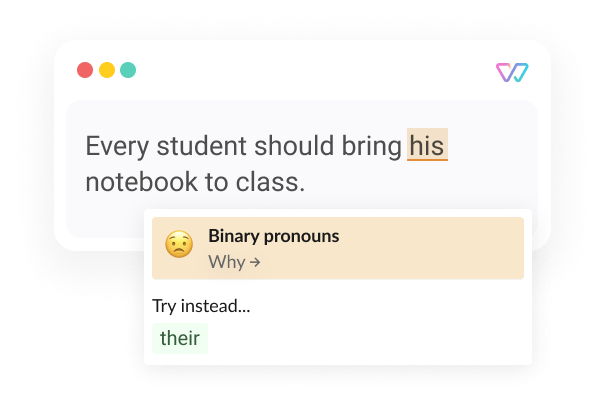
Basic Example

Advanced Example
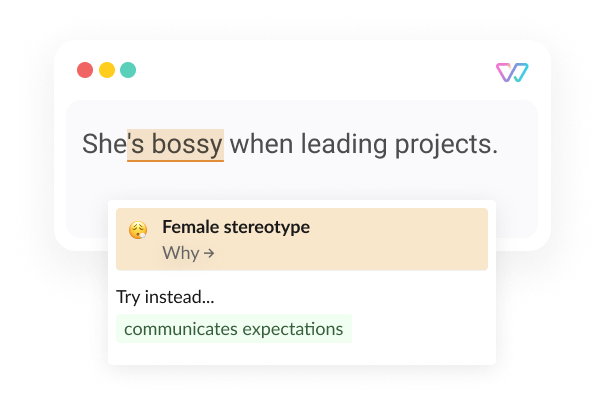
 Female stereotype
Female stereotype

Traps women in outdated stereotypes. Such stereotypes can hinder them to develop their full potential, according to their own wishes, talents and skills.
 Gender binary
Gender binary

To welcome people of all genders, avoid limiting people to traditional gender roles, gender identities, and gender expressions.
From baby colors to family roles to segregated bathrooms, the idea of a two-gender world touches every aspect of society. We are taught to presume a gender based on biology. Once assigned, this gender becomes part of who we are to others. It sets expectations: how to look, how to behave, and who to love. And it stays - for life.
But our understanding of the gender spectrum is growing in leaps and bounds. Society is changing. Help all gender identities feel safe and free to express themselves. Share your pronouns. And ask yourself, "What would I write if this person wasn’t a specific gender?"
Basic Example
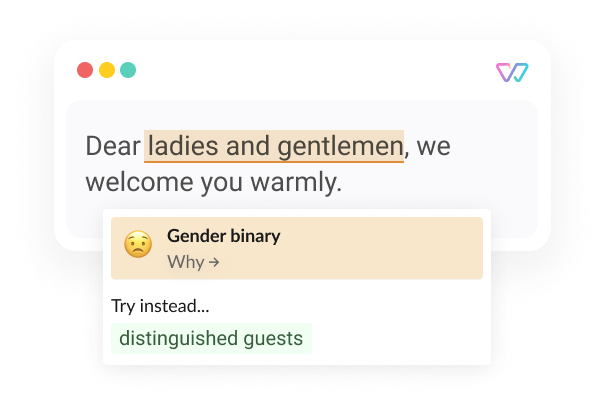
Advanced Example

Basic Example
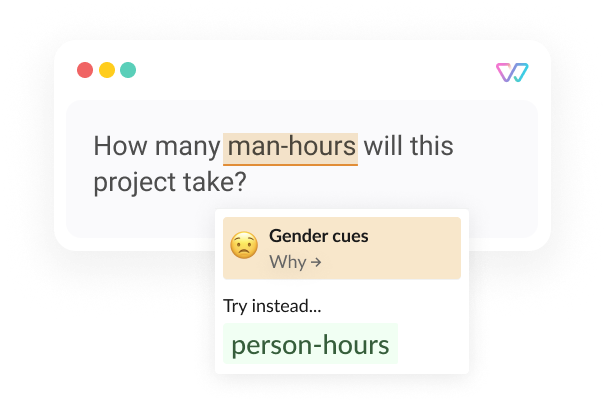
Advanced Example
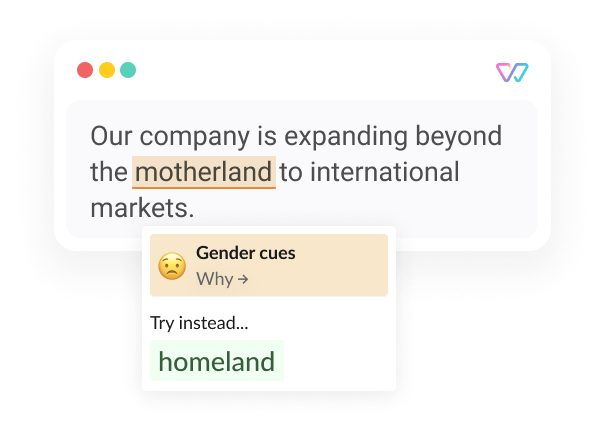
 Gender cues
Gender cues

To show you want all genders to be seen and valued, choose gender-neutral expressions.
Someone glares at a user manual at the office. Shuttles whizz around a man-made mothership in our latest ebook read, and a foreman talks to his errant employee man-to-man. All of these scenes, we are taught, are free of gender cues. But in the movies inside our heads, we cast a single gender. And because most gender cues are male, we cast men. Other genders stay invisible. By using gender-neutral language, you signal that everyone deserves to be seen.
 Gender-specific abbreviation
Gender-specific abbreviation

Abbreviations: (m/f/d) or (d/f/m)?
Out of habit, we often mention the male gender first when
we use abbreviations in job offers, forms, or other
documents. This reinforces the male gender as the norm,
often without us even realizing it. Although such an order
in an abbreviation may seem insignificant, it influences
the reader. In Latin script, we read from left to right,
and this order allows us to recognize who the writer puts
first quickly.
If you want to know more
about "the male gender as default," please read the
amazing book by Caroline Criado Perez, "Invisible Women,
Exposing Data Bias in a World Designed for Men."
This standard has sometimes even deadly consequences
for women and non-binary people.
Basic Example
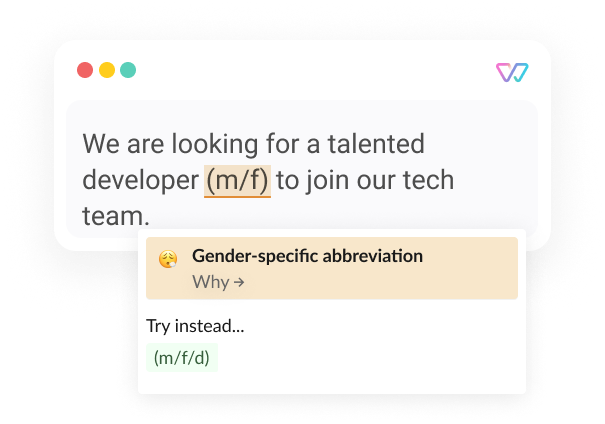
Advanced Example
.png)
Basic Example

Advanced Example
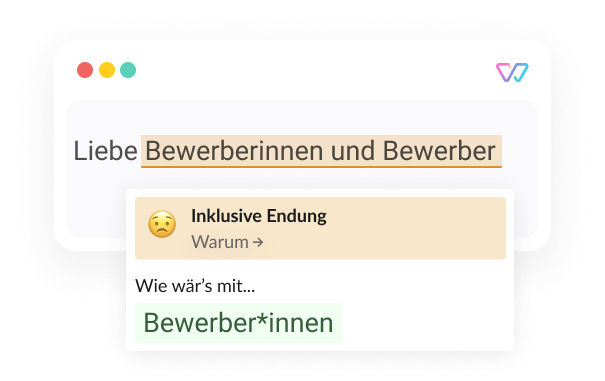
 Gendered denominations ending
Gendered denominations ending

Consistent spelling is more confidence-inspiring.
 Generic masculine
Generic masculine

To include everyone, use options that nudge people’s brains into seeing all gender possibilities.
A superhero, a surgeon, and a priest walk into a bar*. If you’re picturing three men, your brain has tripped over gender stereotypes. These stereotypes are triggered by the traditional gender images around us. It takes our brain some backtracking, or a nudge, to realize these three could be women, non-binary, or a mixed group. You have several options to nudge brains into including all genders (see below).
The punchline? Is “Ouch.” 🥱
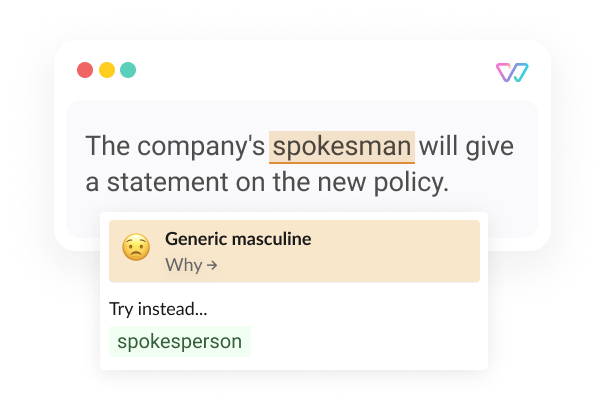
Basic Example

Advanced Example
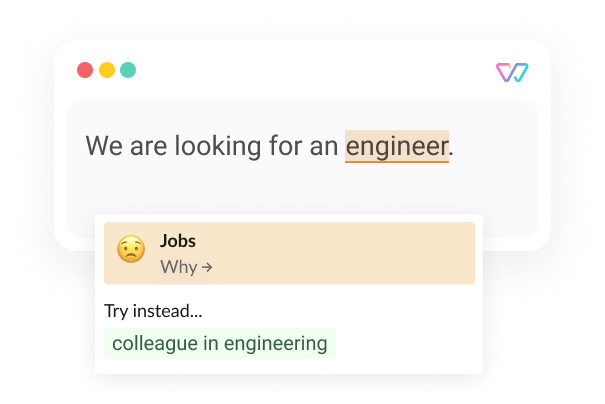
 Job Titles
Job Titles

To reach out to all genders, use gender-inclusive options to describe how someone contributes to a company’s mission.
We use job titles to understand if we’re a good fit for the position a company is looking to fill. And that includes our gender. As many as 79% of jobs ads imply, if unintentionally, the gender of the person expected to do that job. Childhood role models, too, influence who we see when we think of a job. These biases limit candidate pools, pipelines - and the career options and prospects of people of all genders and backgrounds. For an inclusive approach, explore more gender-neutral ways of describing areas of responsibility.
 Male stereotype
Male stereotype

Traps men in outdated stereotypes. These stereotypes hinders them to develop their full potential, according to their own wishes, talents and skills.
Basic Example
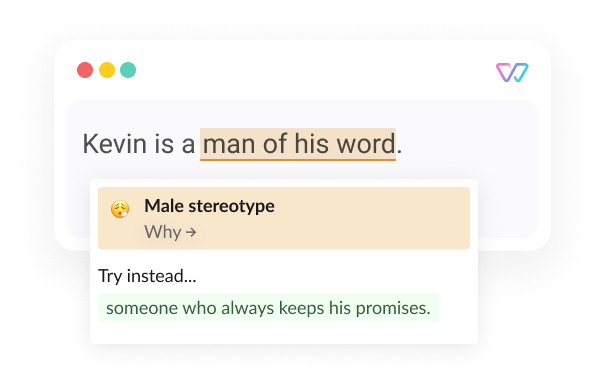
Advanced Example
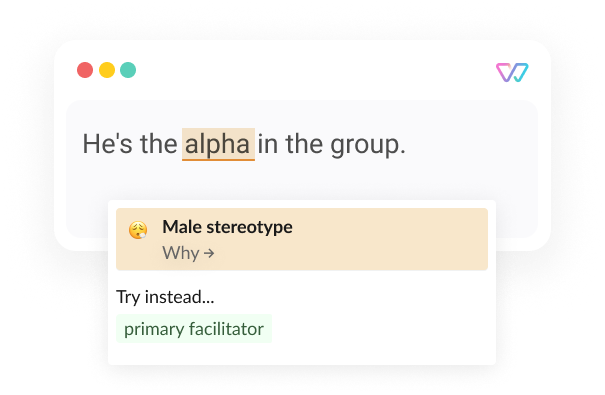
Basic Example
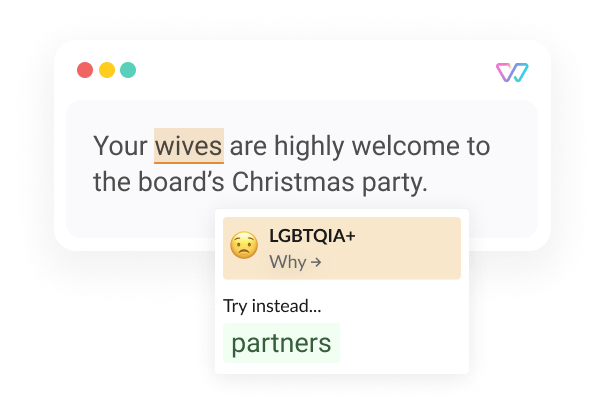
Advanced Example
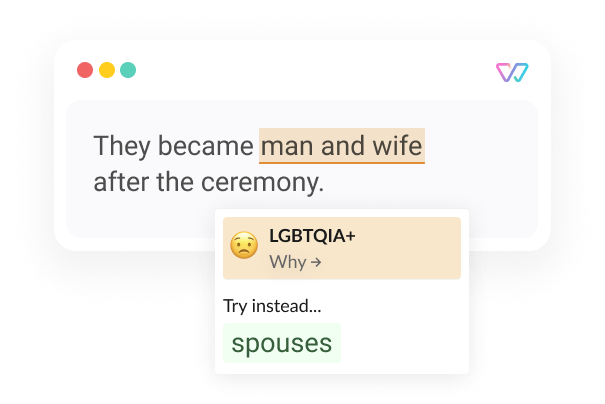
 Sexual orientation
Sexual orientation

Outdated and perhaps even discriminatory understanding of sexual orientation that pigeonholes LGBTQIA+ people and transporting heterosexuality as the norm.
 Traditional leadership
Traditional leadership

To support all gender identities in leading roles, avoid masculine stereotypes and rigid hierarchies when discussing leadership.
Throughout history, ideas of an effective leader matched ideas of masculine traits – single-minded, competitive, and authoritarian. People with feminine traits were not deemed leadership material. But our ideas of what we need from leaders today are evolving. Avoiding male-leader stereotypes helps build a space where people with the ability to be supportive, to encourage, and inspire us to work together toward a common cause can take on leadership responsibilities, regardless of their gender identity.
Basic Example

Advanced Example

